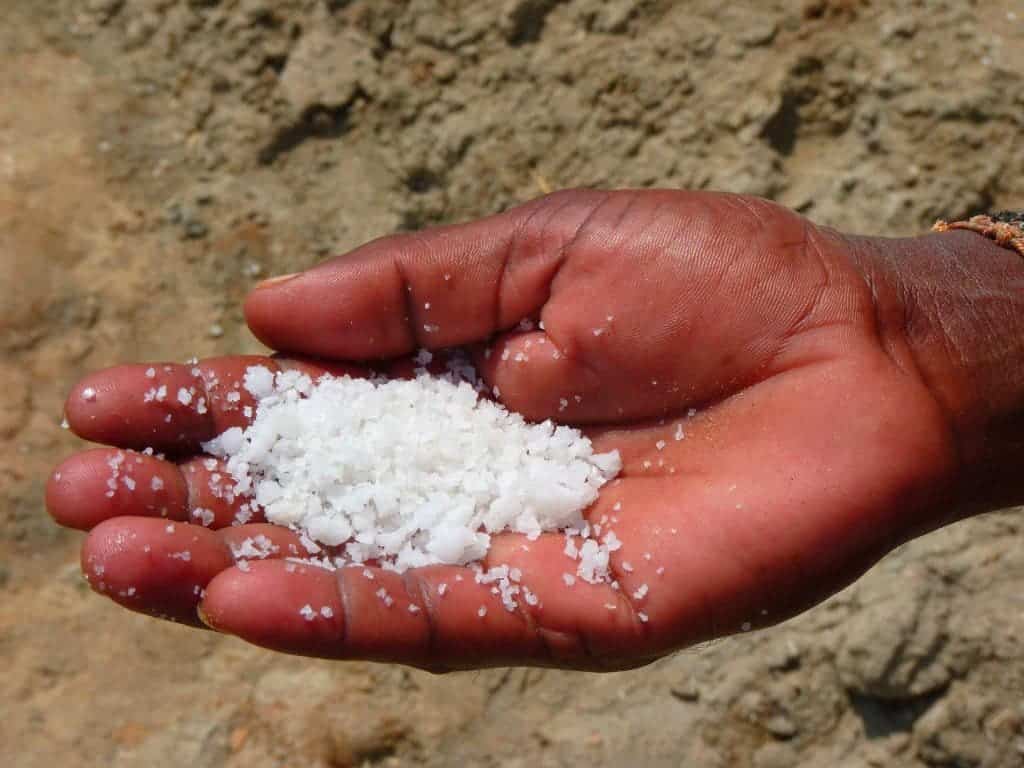Road salts, applied to sidewalks, streets, and highways to melt out snow and ice, represent a serious and growing global threat to freshwater supplies and public health, a new paper reports.

Cold winters make for dangerous roads, and salt has long been used as a tool to de-ice roads. Since it’s a natural product, it was assumed that such procedures wouldn’t cause harm to the environment. A new paper, however, says they do. Salt used for de-icing can negatively impact public health and freshwater sources, it explains, through the chemicals it leeches into the environment.
Salting the wound
“We used to think about adding salts as not much of a problem,” said Sujay Kaushal, a professor in UMD’s Department of Geology and Earth System Science Interdisciplinary Center and lead author of the study. “We thought we put it on the roads in winter and it gets washed away, but we realized that it stuck around and accumulated.”
“Now we’re looking into both the acute exposure risks and the long-term health, environmental, and infrastructure risks of all these chemical cocktails that result from adding salts to the environment, and we’re saying, ‘This is becoming one of the most serious threats to our freshwater supply.’ And it’s happening in many places we look in the United States and around the world.”
Weather-related car accidents claim thousands of lives globally every year, and the application of salt on roads is an important tool in our arsenal towards saving as many as possible. Salt is sometimes also used as a fertilizer on crop fields, and a host of other purposes.
But this salt eventually finds its way into the environment and accumulates, creating a growing global threat.
Previous work by Kaushal’s team found that salt in the wild can interact with soils and man-made infrastructure, drawing out a cocktail of chemicals including metal and radioactive compounds. They called this cascading process the Freshwater Salinization Syndrome (FSS), and found that it can lead to contaminated drinking water sources, impact public health, agriculture, infrastructure, wildlife health, and ecosystem stability.
The current paper explores how the Freshwater Salinization Syndrome impacts human health and the environment. The findings point to freshwater supplies facing serious threats from this syndrome on a local, regional, and global level. The team calls on officials to improve the management of salt usage, and to better regulate it, in order to protect these sources. The team explains that the effects of the FSS is a threat on par with acid rains or biodiversity loss.
For the study, they compared data from freshwater monitoring stations around the world and reviewed studies on the subject, finding a general increase in chloride levels all across the planet. Chloride is a main component in many types of salt like table salt (sodium chloride) or calcium chloride, which is commonly used for de-icing roads. Judging by data from specific regions of interest, the team says we’re seeing a 30-year trend of growing salinity levels; they note the Passaic River, New Jersey and a 100-mile-plus stretch of the Potomac River, which supplies drinking water to Washington, D.C., as areas affected by this trend.
Leeching out
The most important sources of human-related salt in the Northeastern U.S. is road salts, the team explains. Other important sources include sewage leaks and discharges, water softeners, agricultural fertilizers, and fracking brines. Indirect sources of salt in freshwater include road, bridge, and building weathering — salts leech out of limestone, concrete, or gypsum — and ammonium-based fertilizers used in urban or agricultural settings. Sea-level rise can also lead to saltwater intrusion.
Chemicals released from all these sources harm both anthropic and natural environments. For example, changes in environmental salt levels can allow invasive, salt-tolerant species to take over a stream. These compounds can change the microflora in soil and water, which can lead to even more changes, as bacterial communities underpin the health of whole ecosystems. For built environments, salts can lead to corrosion in roadways and broader infrastructure. This can lead to the leaching of heavy metals in drinking water, as was the case in Flint, Michigan.
“I am greatly surprised by the increasing scope and intensity of these problems as highlighted from our studies,” said study co-author Gene E. Likens, founding president emeritus of the Cary Institute of Ecosystem Studies and a distinguished research professor at the University of Connecticut.
“Increased salinization of surface waters is becoming a major environmental problem in many places in the world.”
For now, the team explains, there are still a lot of unknowns. Exactly how these higher salinity levels will impact the environment is still poorly understood. Furthermore, every body of water presents its own conditions and unique management issues in regards to salt. The best way to go about fixing these issues is to treat salt the same way we do nutrient loads: look at all the different sources on a watershed-ecosystem level and prioritize regulation accordingly, the team explains. Sadly, they also note that work has been done to create technological solutions to nutrient runoff, but similar methods do not exist for salt.
“Ultimately, we need regulation at the higher levels, and we’re still lacking adequate protection of local jurisdictions and water supplies,” Kaushal said. “We have made dramatic improvements to acid rain and air quality, and we’re trying to address climate change this way.”
“What we need here is a much better understanding of the complicated effects of added salts and regulations based on that. This can allow us to avert a really difficult future for freshwater supplies.”
The paper “Freshwater salinization syndrome: from emerging global problem to managing risks” has been published in the journal Biogeochemistry.






